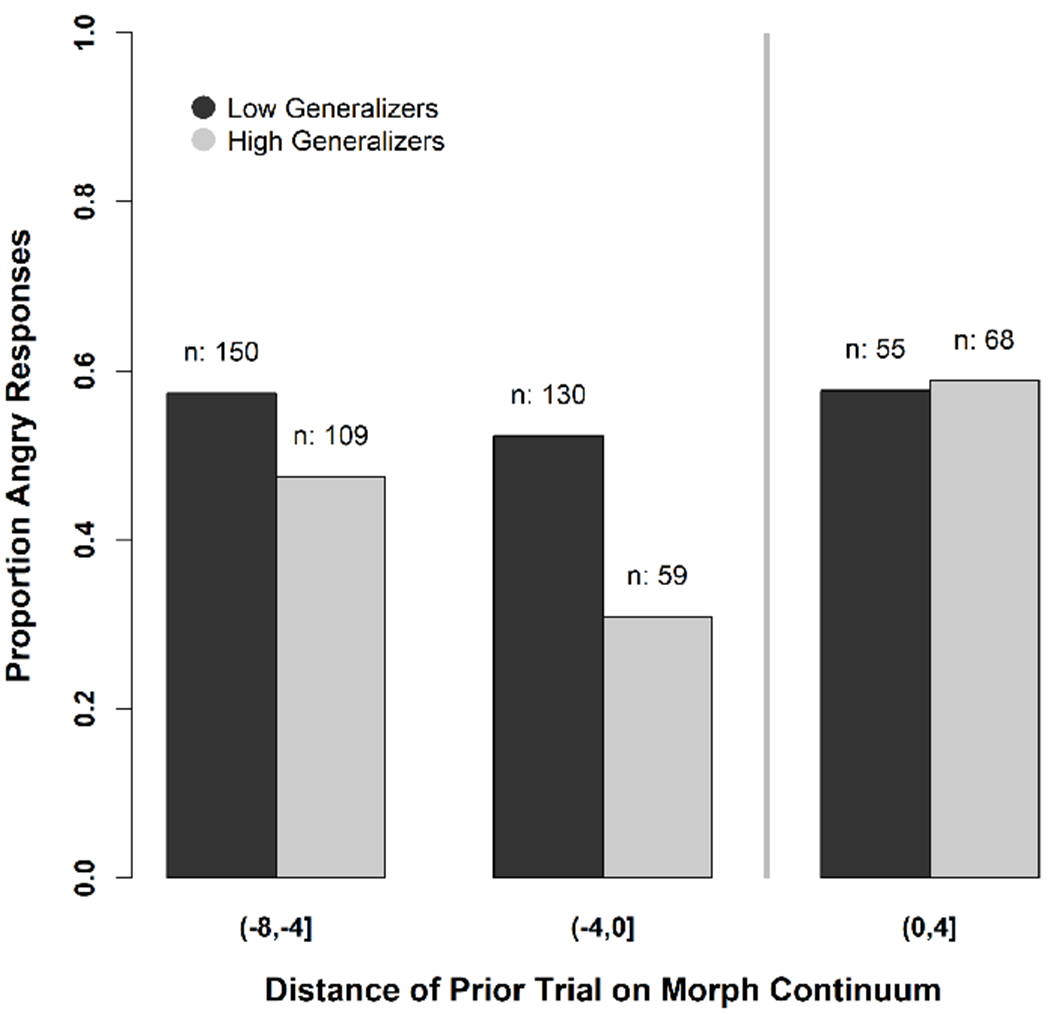Figure 4.

A model free illustration of high generalization by prior trial feedback. Generalization refers to the influence of neighboring stimuli, or morphs, on learning. Its effects are clearly represented without the need for a model in a single ambiguous morph. This morph is highly vulnerable to uncertainty because it is the morph just on the happy side of the feedback threshold during training (see Figure 1). Recall, the position of the training threshold on the morph continuum differs for each participant by their initial balance point so, the morph just on the happy side of this threshold is denoted as morph 0 (the gray line) for reference. To represent the distance on the morph continuum of prior trials, the judgments of morph 0 are divided into categories that are defined by its distance to the morph in the prior trial. Relative to morph 0, prior trial morphs may be distant (4 to 7 morphs to the left of the feedback threshold) or may be close (within 3 morphs of either side of the threshold). Feedback during the prior trial encourages happy judgments on the left side of the gray line, and it encourages angry judgments to the right. High generalizers are clearly influenced by prior trial feedback, even if the feedback was to a morph distant to morph 0 (p<.01). Note, this represents 1/15th of the data, i.e. judgments of morph 0, and ‘n’ refers to the number of judgments of morph 0 across participants.
